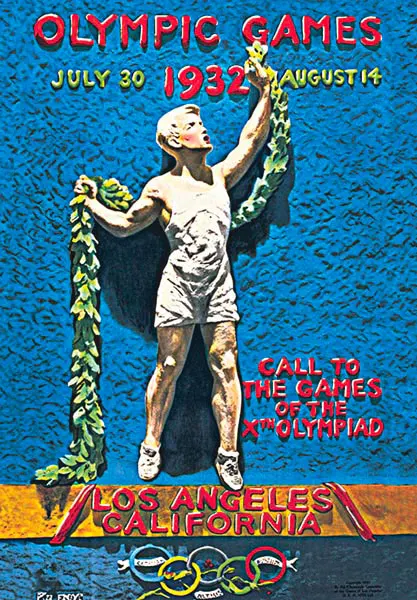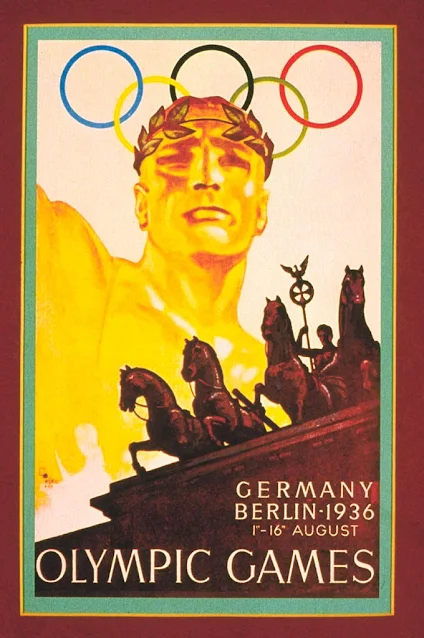Tokyo 2020 finally started and, for the 29th time in history, Omega is serving as the Official Timekeeper of the Olympic Games continuing a unique partnership that started almost 90 years ago.
The Los Angeles Games in 1932 marked the first time that responsibility for Olympic timekeeping had been assigned to a single company: Omega.
At the previous Games in Amsterdam, timekeepers had used their own stopwatches. In 1932, for the first time, 30 calibrated chronographs would provide unprecedented precision.
One of the chronographs allowing to take split seconds timing used in Los Angeles in 1932
In 1936, a suitcase containing 185 stopwatches travelled from Basel to Berlin for the Olympic Games that would be remembered for the great Jesse Owens.
The Second World War meant a 12 year gap before the Games would return in London, in 1948. Omega had provided more than 50% of all the military timepieces - watches, wristwatches and pocket watches - to the Allied forces, including the Royal Airforce pilots flew. Such a huge effort had an impact on the timekeeping technology further improving precision.
This was the first time that Omega had used the photo electrical timing system in the Olympic Games.
It was done with an electronic pistol on the start and a photo-finish camera for the first time. The whole process was taking about two minutes before they could make the announcement.
The photoelectric cell recorded the exact moment the finish line was crossed, solving the problem caused by the long-used finishing line tapes. The photofinish camera allowed judges to see, without doubts, the exact order in which athletes finished an event. This was a big development in the history of timekeeping.
The Olympics in Helsinki in 1952 marked another quantum leap for timekeeping with the development of the Omega time recorder. This impressive electronic chronograph featured a high-speed printing device which enabled Omega to time events and instantly print out the results to the nearest 1/100th of a second.
Like the Omega’s Magic Eye in London, the time recorder helped deal with controversial decisions.
Rome 1960 saw the first large electronic scoreboards and the first television coverage. As the demand for timekeepers had increased, Omega tripled its staff at the Games. Precise timing played a crucial role in many finals including the 100 m, where the winning margin was just 0.01 seconds.
In 1964 Omega introduced the Omegascope that allowed to superimpose numbers on the bottom of the screen thus introducing the concept of real time in television sports. It was used during the Winter Olympics in Innsbruck as well as in Tokyo for the Summer Games.
Despite the huge advancements in timekeeping technology, controversy and close finishes remained the lifeblood of the Games. At the 1968 Games held at Mexico City, electronic touchpads represented a milestones for the Olympic swimming competitions. With them, first introduced one year earlier at the Pan-American Games in 1967, the timing would end when the swimmer touched a touch-sensitive pad built on the wall of the pool. These pads were reactive towards the slightest of human touches but non-disreputable due to water pressure.
Mexico City was also the first time that electronic timekeeping was used at all events at the Olympic Games.
Several new timekeeping technologies, including pressure-sensitive false start detectors used in swimming and athletics, were introduced at the 1984 Olympic Games in Los Angeles.
In 2010, the new Omega Electronic Start system, a futuristic red flash gun and a sound generation box replaced the traditional starting pistol, created lot of buzz during the Olympic Winter Games in Vancouver.
At the 2012 Olympic Games in London, the Quantum Timer heralded a new generation of timing products making it possible to to measure one-millionth of a second (!) with a maximum variation of only one second out of ten million seconds.
As the team in charge of time at Tokyo 2020, Omega keeps ensuring that every athletic performances is accurately measured and recorded bringing its unique experience and a mountain of technology: 400 tonnes of timekeeping equipment, 350 sport-specific scoreboards, 85 public scoreboards and 200 kilometres of cables and optical fibre. omegawatches.com





















